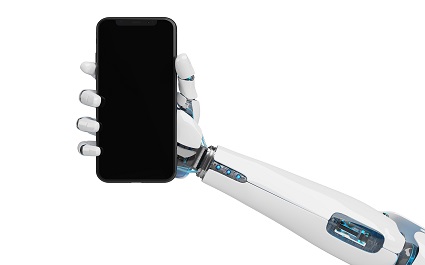The House Energy and Commerce Committee is working on a new bill called the “Stopping Bad Robocalls Act.” The title is interesting, because it seems to assume that there are good robocalls. Most consumers don’t agree.
Robocalls are phone calls made by a bot rather than a human. You might receive these calls. “Hi, this is Lisa,” the bot will chirp happily. “I’m calling you because you visited our resort.” Or they’ll jump right in with, “Don’t hang up! This is an important call!”
Now, it’s common for robocalls to spoof the caller number. It doesn’t say “unknown” and may look as though it comes from the town where you live.
We don’t use this technique for marketing, but we have clients who have worked with other organizations to do so, often using legal loopholes to make sure they’re not breaking the law. This is important because most robocalls are already illegal.
Why are automated calls a problem?
As early as 2016, research on the subject showed that the majority of consumers hate robocalls and are unwilling to accept them. But things have gotten more serious now.
According to Consumer Reports, 70% of Americans now just don’t answer their phones when they don’t recognize the incoming number. This clearly creates problems for individuals and costs businesses money. In healthcare, it’s a lot more serious. “A person sees a doctor and is referred to a specialist,” one healthcare provider explained. “But when the specialist’s office tries to call the patient for an appointment, no one answers the phone. The patient—not recognizing the incoming phone number—sometimes assumes it’s a robocall and refuses to answer.”
Operational costs are an issue here, as staff time is wasted on attempts to communicate, but there can also be consequences for patients, as treatments are delayed or medical staff give up and completely fail to get through.
More extreme cases of automated spam calls have even shut down hospital switchboards. The most common scams are related to health insurance, and sometimes spoof numbers belong to healthcare facilities. So this is particularly a problem in the healthcare field.
Good robocalls?
Consumers hate all robocalls, but you might be using them to confirm appointments, remind donors that you’re expecting an annual donation, or to alert people that their prescriptions are ready. These may be valid uses of robocalls.
However, customers may not answer at all, or they may hang up the instant they recognize a robot voice. They may not answer when a human being calls from an unrecognized number, or they may hang up on a human being who is legitimately calling about health insurance, since so many people have already received multiple scam calls on this subject. The telephone is losing its value for business and patient care.
At least as a telephone. Texting is an alternative — but it can be more expensive and require more tech skill. Robocalls have gotten very cheap.
If you’re using robocalls, make sure you’re ready for the legal changes coming up.
What the new bad robocalls bill says
If the new bill passes, FCC would be required to update existing rules under the Telephone Consumer Protection Act (TCPA) of 1991. Consumer protections to be required:
- Robocalls can only be made with consent.
- Consumers can withdraw that consent.
- Robocallers have to keep records to prove they have the required consent.
- Exempted robocallers (from the 1991 law) will have to have tighter regulations and proofs that they are following the law, too.
- Phone carriers will be required to “implement a new technology to make sure that caller-ID information is appropriately authenticated with no additional line item charge for consumers on their bill.” That is, they’ll have to come up with some kind of new technology and they can’t charge customers for it.
- Blocking services will also have to be provided for free.
Chances are good that robocalling services will quickly become less inexpensive.
Next steps
If you’re currently using automated calls, go ahead and make sure that the service you use gets consent and keeps track of that fact.
Let patients know that you might call them, ask their permission to use automated calls, and encourage them to add any phone numbers you use to their contacts list.
These steps can help. However, this might be a good time to come up with a Plan B. Contact us to discuss marketing strategies that won’t get you in hot water with the FCC.


Leave a Reply